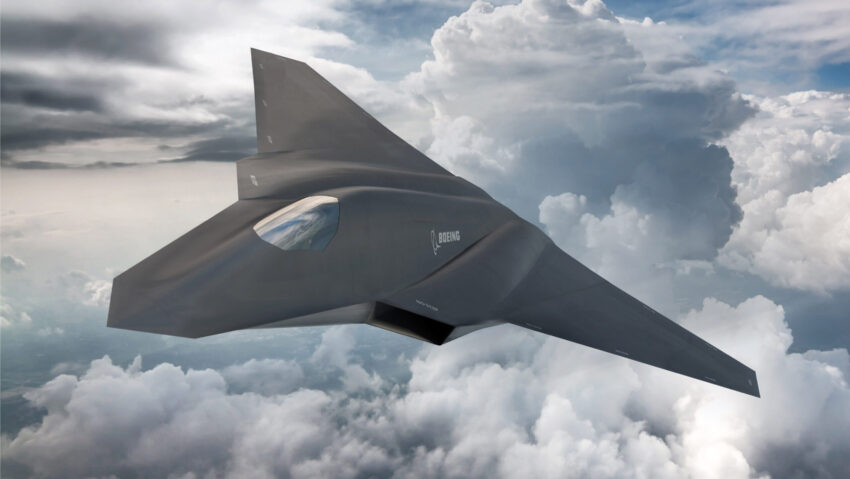A Boeing rendering of a next-gen fighter. (Boeing photo)
WASHINGTON — The Air Force’s next-gen engine protype effort is facing a two-year delay and will not complete before fiscal 2030, the service confirmed today to Breaking Defense.
Under the Next Generation Adaptive Propulsion (NGAP) program, engine makers GE Aerospace and RTX subsidiary Pratt & Whitney are currently fabricating dueling engine designs, work that FY25 budget documents show was expected to wrap up in the fourth quarter of FY27. However, in FY26 documents released by the Trump administration in June, that timeline has shifted by over two years to the second quarter of FY30.
Asked about the delay, an Air Force spokesperson said, “The updated schedule in the budget documents reflects supply chain challenges encountered by the program.”
In a statement, a spokesperson for GE Aerospace said that the company “is executing the NGAP contract schedule as proposed.” GE has also expressed confidence that the program could be accelerated.
A spokesperson for Pratt similarly said, “While the U.S. Air Force is best positioned to discuss the overall schedule, we can confirm that Pratt & Whitney is successfully executing the NGAP program, fulfilling our commitments in alignment with their plan. Pratt & Whitney is closely collaborating with our supply chain to enhance delivery by implementing advanced digital design models that will streamline manufacturing and inspection processes.”
Following a new round of NGAP contracts issued by the Air Force that raised the total award ceiling for each vendor to $3.5 billion, both GE and Pratt announced in February that they completed a detailed design review and could begin fabricating their engine prototypes. The Air Force is expected to eventually downselect one NGAP contender to carry forward.
The “adaptive” engine technologies underpinning the NGAP program could herald a leap in military propulsion, Air Force officials have said, because they can change the characteristics of a jet engine in flight to enable features like more fuel efficient cruising or increased thrust. The NGAP program draws from work previously conducted under the Air Force’s Adaptive Engine Transition Program, which constructed a new, prototype engine for the F-35 but was ultimately passed over due to budgetary constraints and other logistical concerns.
The Air Force has previously said NGAP is designed to be platform agnostic, meaning the engine architecture could serve various propulsion needs, but the program was envisioned to provide a powerplant for the Air Force’s Next Generation Air Dominance fighter now known as the F-47. Considering the aggressive timeline the Pentagon is pushing to fly the F-47 before the end of President Donald Trump’s term, a next-gen engine is likely out of reach for the fighter in the near future.
The FY26 budget documents also reflect a drop in funding for NGAP. Whereas FY25 budget documents projected the Air Force would invest roughly $439.9 million in the program in FY26, the Trump administration’s budget requests $330.3 million. (The administration also did not include the Future Years Defense Program, a five-year spending projection for DoD programs that is typically included in annual budget documents.)
Asked about the funding cut, an Air Force spokesperson previously told Breaking Defense that the reductions “reflect the program’s transition from Detailed Design to Prototype fabrication and assembly activities, and programmatic adjustments within the RDT&E [research, development, test and evaluation] portfolio to improve resource efficiency.” The requested funding, the spokesperson said at the time, “resources two contractors through Assembly Readiness Review, a key milestone for assessing readiness of the contractors to proceed into the build and test phase of the program.”
Click this link for the original source of this article.
Author: Michael Marrow
This content is courtesy of, and owned and copyrighted by, https://breakingdefense.com and its author. This content is made available by use of the public RSS feed offered by the host site and is used for educational purposes only. If you are the author or represent the host site and would like this content removed now and in the future, please contact USSANews.com using the email address in the Contact page found in the website menu.








